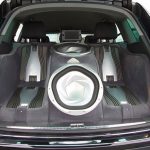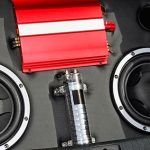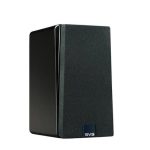If you’ve noticed that the bass performance from your subwoofer is not as tight as it used to be, then there is a probability that the subwoofer box is leaking air. Apart from poor performance, you may also hear air rushing out of the subwoofer box.
Using a subwoofer box that is leaking air can have a significant impact on the SPL level of your subwoofer as well as compromise the overall sound quality. Before you figure out how to fix the leaking subwoofer box, you’ll first need to determine the location of the air leaks.
You can achieve this by cranking the volume and examining the box by running your hand over it. That way you should be able to pinpoint the exact spot leaking air, and from there, you can take appropriate measures.
If your subwoofer box is leaking air, there are a few potential causes and solutions to consider. Some of the potential causes include;
- Improper sealing: One of the common causes of subwoofer box leaking air is incorrect sealing. If your subwoofer is not sealed properly, there is a high chance for air to escape through cracks and gaps. Improper sealing can be caused by using poor-quality silicon, incomplete construction, or even damage to the subwoofer box.
- Damaged/loose components: Another possible culprit is damaged or loose components. If the subwoofer box itself or any other component of the box is damaged or loose, it might cause the air to leak.
- Worn out gaskets/seals: This is pretty obvious. If any of the gaskets or seals around your subwoofer box are damaged or worn out, they might create room for air to leak. Similarly, damaged seals will not provide a proper seal, and this might make the air escape.
- Poor design: Sometimes, if the subwoofer box is poorly designed, it can cause air to leak. Furthermore, anything that compromises the integrity of the subwoofer box can cause air to leak. The good thing is that most subwoofer boxes, even the cheapest ones, are designed to be non-resonant and pretty sturdy to allow them to take some abuse.

That said, here are some steps you can take to try and fix a subwoofer box that is leaking air:
Inspect the gaskets/ seals around the subwoofer box
As we have mentioned, gaskets or seals can become worn or damaged over time, making air to escape from the enclosure. If you suspect the gaskets or seals are behind the problem, you’ll need to inspect them for any signs of damage. If you establish that they are damaged consider repairing or replacing them as soon as possible.
Check for holes/cracks
If you have checked the gaskets and seals and established that they are in good condition, then you can shift your attention to the subwoofer box itself. Check the enclosure for any sign of damage as well as visible cracks and holes. Generally, any openings in the enclosure will definitely make the air to leak. In this case, you’ll need to repair the holes and cracks to fix the leaks. If the enclosure is severely damaged, consider getting a replacement.
Inspect the subwoofer driver
If the subwoofer driver and other related components are not seated properly inside the box, they might allow air to escape. If this is the case, you’ll need to adjust the driver to ensure that it is securely and properly aligned. You may also want to ensure that the subwoofer is mounted properly inside the box. If the subwoofer is not seated properly, it might cause air to leak out of the enclosure.
Check the wiring
If the wiring is loose or not connected properly, it can create room for air leaks. Inspect all the wires running to the amplifier, speakers, and receiver to ensure that the wires do not leave gaps that can cause air leaks. Generally, to fix wiring issues, you’ll need to ensure that they are in good working condition and connected properly.
Redesigning the subwoofer enclosure
If you suspect that the design of the subwoofer is causing air to leak, you can make minor upgrades and see if it will help fix the situation. You can start by adjusting the size of the box and replacing any part that looks cheap. You may also want to ensure that all the seals are sealed and airtight. If redesigning the box does not seem to work, consider getting a new enclosure for your subwoofer.
Frequently Asked Questions
What happens if my subwoofer box is too small?
If the subwoofer box you’re using is too small, it can affect the subwoofer’s performance in several ways. First off, the subwoofer might struggle to reproduce the full range of frequencies it is designed to handle. The result of this is less output for any given audio signal and less-boomy sound.
The subwoofer might also become prone to distortion as the box struggle to provide enough volume for the driver to move freely. As such, it is critical to use a properly sized subwoofer enclosure to ensure the best performance.
Can a subwoofer box break from too much bass?
Typically, subwoofer boxes should not break from playing too much bass. Most enclosures are made using sturdy materials (such as MDF) to allow them to withstand the pressure generated by the subwoofer. However, if the subwoofer is poorly constructed it can become damaged easily when subjected to an excessive amount of bass for an extended period.
For instance, if the box features thin or standard-quality materials, it can be more susceptible to physical damage. To be on the safe side, ensure that the enclosure is properly constructed and capable of handling the power requirements of your subwoofer.
The Bottom Line
It is important to emphasize that air leaks can significantly impact the performance of the subwoofer, so it is critical to address any leaks as soon as possible. To fix a subwoofer box that is leaking air, you’ll need to get to the root cause of the problem and undertake the necessary measures.
This may involve re-aligning the subwoofer driver, sealing cracks/gaps, repairing damaged gaskets/seals, repairing or replacing damaged parts, re-aligning the wiring, and in some cases, redesigning the subwoofer box.
However, if you are not sure about how to fix a subwoofer enclosure that is leaking air, it is best to consult a professional. If nothing works even after consulting a professional, consider replacing the subwoofer box.
Michael Evanchuk is a San Francisco-based sound engineer with 20 years’ experience installing, troubleshooting, and repairing commercial, automotive, and household sound equipment. Evanchuk owns an auto stereo center, where he offers highly competitive car audio installation and repair services. He has written dozens of articles on different sound engineering topics, all of which have been published in leading journals, blogs, and websites.





